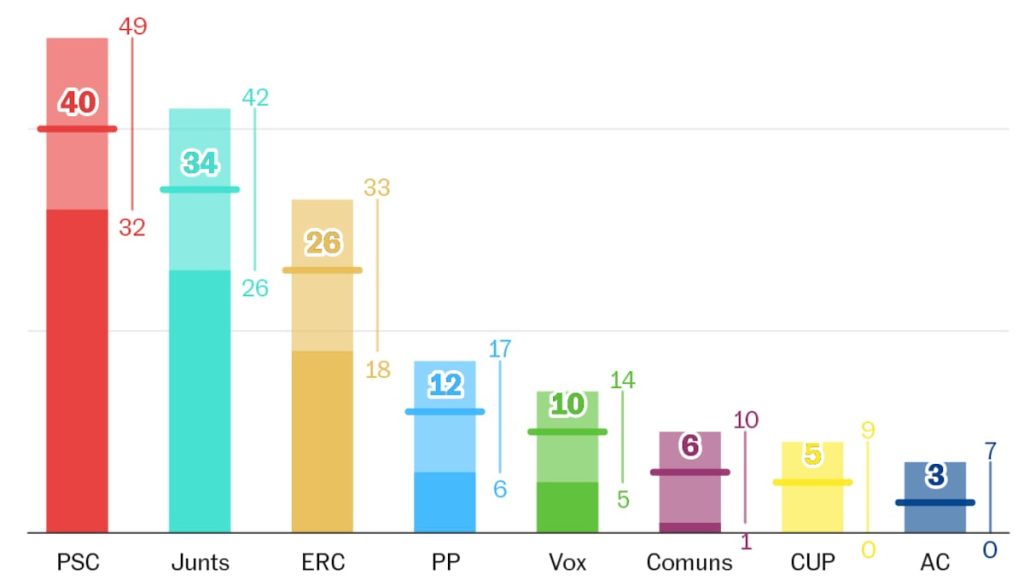The Catalan elections this Sunday have been growing more uncertain day by day. The latest prediction, with polls from Monday, showed a main scenario, but also a 40% probability for other results. Polls are better at predicting outcomes than any alternative, but they are still an approximation. There have been errors of four seats or more with some parties in the past, so predictions are expressed with probabilities. The day before each vote, possible surprises are discussed.
Scenario 1. Only the left adds up. The first possibility is that nothing surprising happens and the polls are correct. In this case, there would be a possible majority between PSC (40 seats), ERC (26), and Comuns (5), totaling around 71 seats, three more than the 68 needed. There is a 50% to 60% chance of a situation like this, where a left-wing coalition (PSC, ERC, and Comuns) reaches a majority, but not the pro-independence sum of Junts, ERC, and CUP. This scenario also includes a potential success for the PSC.
Scenario 2. The ERC dilemma. The second scenario is that two majorities are possible at the same time: PSC, ERC, and Comuns, or Junts, ERC, and CUP. This scenario has a 20% probability. This would be a paradoxical situation where Pere Aragonès of ERC could act as the key to swing the government towards one side or the other, facing parties with more votes and seats.
Scenario 3. The deadlock. With a 14% probability, the third scenario is that neither of the two main majorities would be mathematically possible. The key could lie in unlikely alliances or agreements that go against party declarations, potentially leading to a political deadlock and a subsequent repeat election.
Scenario 4. Junts’ growth. In the last case, the only easy majority would be the pro-independence one, if the sum of PSC, ERC, and Comuns falls short. This scenario has a 9% probability. Carles Puigdemont’s Junts party could potentially surpass the PSC in seats, even if they have fewer overall votes, due to the intricacies of the electoral system.
In conclusion, the most likely outcome on Sunday seems to be the first scenario, but there is a significant chance of a different result. Predicting surprises is easy, but predicting the exact outcome is much harder. The methodology used for calculating seats takes into account historical polling accuracy and simulates 20,000 elections to determine probabilities.


